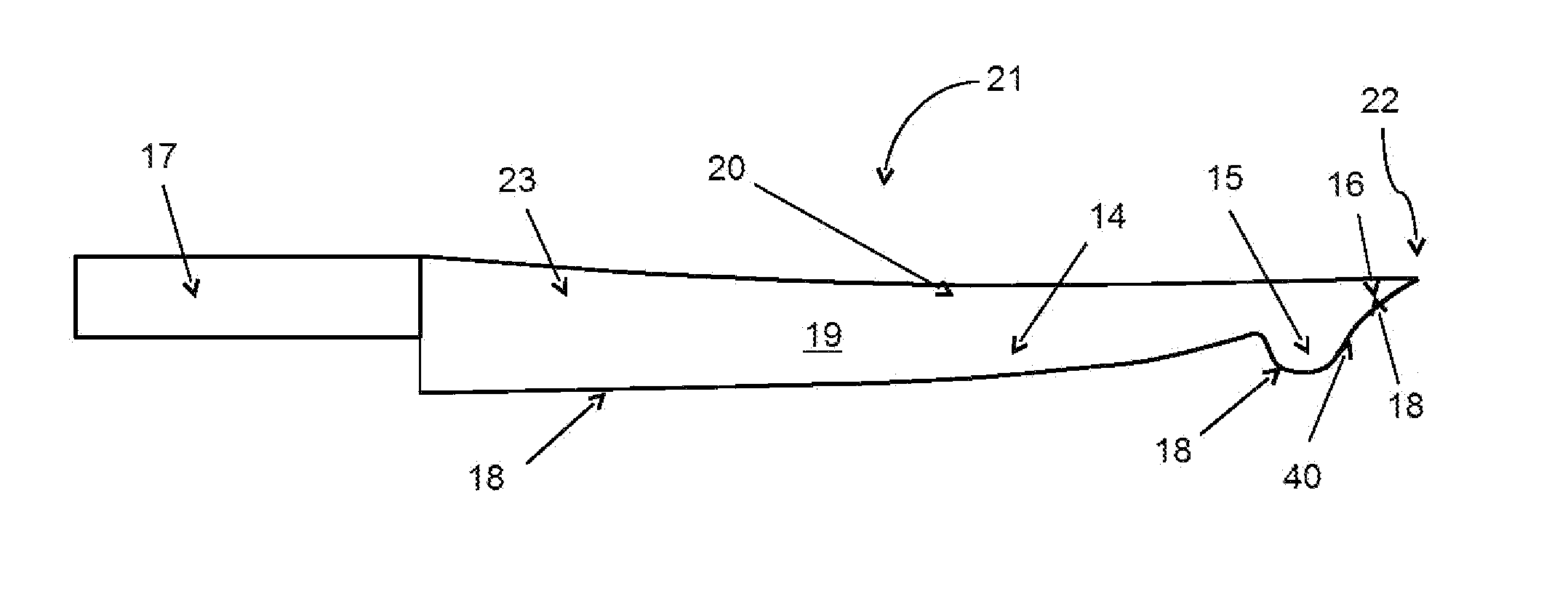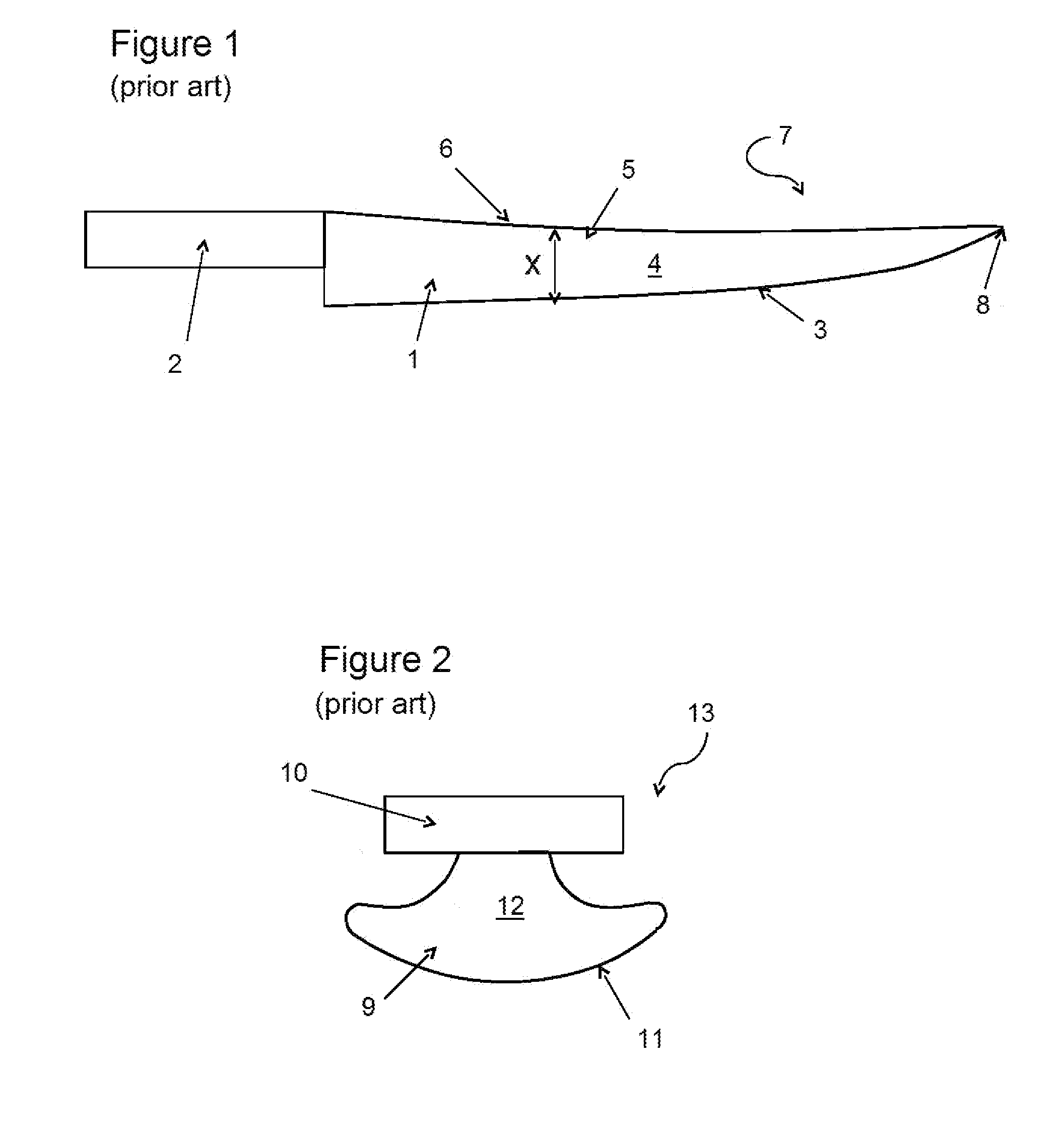Filleting Knife Blade
a technology of a knife blade and a blade is applied in the field of knife blade construction, which can solve the problems of difficult lengthwise piercing of heavily scaled areas, difficult peeling, and limitations of the long filleting blad
- Summary
- Abstract
- Description
- Claims
- Application Information
AI Technical Summary
Benefits of technology
Problems solved by technology
Method used
Image
Examples
second embodiment
[0036]FIG. 4 is a side view of the present invention.
DETAILED DESCRIPTION OF THE PREFERRED EMBODIMENTS
[0037]The novel features which are believed to be characteristic of the present invention, as to its structure, organization, use and method of operation, together with further objectives and advantages thereof, will be better understood from the following drawings in which a presently preferred embodiment of the invention will now be illustrated by way of example only. In the drawings, like reference numerals depict like elements.
[0038]It is expressly understood, however, that the drawings are for the purpose of illustration and description only and are not intended as a definition of the limits of the invention. Also, unless otherwise specifically noted, all of the features described herein may be combined with any of the above aspects, in any combination.
[0039]The present invention utilizes the combination of long blade and “ulu”-like blade characteristics into one filleting blad...
PUM
 Login to View More
Login to View More Abstract
Description
Claims
Application Information
 Login to View More
Login to View More - R&D
- Intellectual Property
- Life Sciences
- Materials
- Tech Scout
- Unparalleled Data Quality
- Higher Quality Content
- 60% Fewer Hallucinations
Browse by: Latest US Patents, China's latest patents, Technical Efficacy Thesaurus, Application Domain, Technology Topic, Popular Technical Reports.
© 2025 PatSnap. All rights reserved.Legal|Privacy policy|Modern Slavery Act Transparency Statement|Sitemap|About US| Contact US: help@patsnap.com



